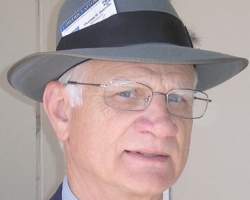(FLINT, MI) – I’ve been back in my hometown for the past few months, sending my columns by carrier pigeon to The Star-News. Because I write about true crime, and because Flint has one of the highest homicide rates per capita in the nation, one of the editors of the Flint Journal asked me if I would ever write a book about a Flint murder.
I had to answer him honestly and politically incorrectly (honesty and political correctness are two mutually exclusive terms). If you are honest, you are usually politically incorrect. If you are politically correct, you’re probably not being honest.
I told him Flint’s homicides are not the stuff of books. You see, in order to sell a true crime book, the victim must be likeable or at least have some notoriety. There aren’t many rich or famous people in Flint. Sadly, many Flint homicide victims are drug dealers, hookers, thieves, or worse.
Most Flint crimes are black-on-black shootings that happened because of drug transactions or perceived “disrespect,” one of the most stupid reasons to kill someone there is.
The average book-buying person doesn’t care about these kinds of murders, no matter how skillful, hard working, or talented the cops are who investigate and close the cases. The readers simply don’t care. They can’t relate to some bling-laden thug gunning down another bling-laden thug just because one looked wrongly at the other or failed to pay a drug debt.
Since May, five dead men showed up on Flint streets in the early morning hours. All had been stabbed. Many were homeless, disenfranchised, vulnerable or challenged in some way. None were active criminals or gang members.
There were eleven more who were wounded, yet survived. Some victims got a look at their attacker. The light finally came on: a serial killer was on the loose in the Flint area. When this made national news, similar attacks came to light in at least two other parts of the nation.
From a crime writer’s point of view, this was something that needed to be monitored and examined. Multiple murders are interesting, no matter the victims’ state in life. To add to the mix was the fact that Flint had laid off 46 cops in the past few months. Sometimes people in Flint call the police and no one comes. It really happens.
Unfortunately for newspaper readers, The Flint Journal has been a revolving door for reporters. The 25-year old police reporter I rode along with in December had moved on to a job in another city. What remains is a stable of youngsters who haven’t cultivated sources, and often don’t have whatever it takes to ask the tough questions.
Even though they might be good someday, the newbies are learning the trade at the expense of the readers. The paper has a couple of seasoned people, but the others are cutting their journalistic teeth on a major serial killer case.
Last week a suspect was arrested for the 16 stabbings while trying to flee the country. He has been linked to stabbings in two other cities. The suspect worked in a convenience store on the outskirts of Flint, about four miles from my home.
There is much investigating to do. If several of the survivors can identify him, there is a charge of aggravated assault to go forward with. It’s a big jump to levy a homicide charge unless there is additional forensic evidence linking him to the deceased men. That may be tough to prove.
While the book-buying public might not care about one homeless guy getting stabbed to death, they might care about multiple stabbings that ended with five murders, and more in other states.
This could be interesting yet.
Basinski is a 35-year police veteran, 17 of them with Chula Vista. His column appears the first and third week of the month. Basinski lives in Chula Vista. His website is www.tombasinski.com.












